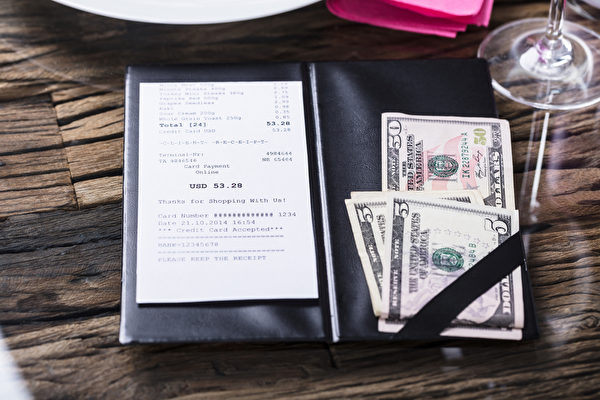Tipping is a part of American consumer culture, but an increasing number of people are feeling that this culture is getting out of hand. It’s not just restaurants anymore; beverage shops, grocery stores, online retailers, home repair workers, furniture delivery personnel, delivery drivers, and even self-checkout machines now “expect” customers to tip.
According to a recent survey by the personal finance website Bankrate, opinions on tipping in the United States are mixed, with 59% of people having a negative view of it. Reasons for this aversion include believing that businesses should pay their employees higher wages and being annoyed by the pre-filled tip options on payment screens.
To conduct this survey, Bankrate questioned over 2,400 American adults between April and May 2024, revealing a prominent viewpoint: more than a third (35%) of people believe that the tipping culture has gotten out of control.
“The number of businesses soliciting tips has reached a new high. Tipping has essentially become a hidden tax,” said Ted Rossman, senior industry analyst at Bankrate in a statement. “Given the price hikes we’ve seen in recent years, many companies are hesitant to further raise prices, but requesting tips can essentially serve as a way for them to raise prices without making customers feel like they’re paying more.”
Charlyn in Los Angeles often goes out to eat with friends and always tips voluntarily, but recently she has had some unpleasant experiences. She noticed that many bills now suggest tipping percentages, with the minimum suggestion post-pandemic starting at 18% compared to the more common 10%, 15%, and 18% before. On a recent dining experience, she was shocked to see a bill suggesting a tip of up to 30%.
“Tipping has inflated too,” she joked. “That day we spent just over $59, so I rounded it to $70, which was close to an 18% tip. But as we were leaving, a waiter stopped us and bluntly asked, ‘Is this all you’re tipping?’ I was speechless at the time and replied, ‘How much more do you want?’ before walking away with my friends.”
Charlyn said she doesn’t mind tipping as it’s a gesture of courtesy, and servers work hard, but she dislikes the oppressive feeling of being forced to pay a specific amount as a tip.
Bankrate’s survey data shows that more American adults are tipping restaurant servers, hairstylists, delivery personnel, and taxi drivers compared to last year. Many are willing to pay extra for good service but dislike the notion of being compelled to tip.
Rossman stated, “A tip is an added fee; it burdens customers while allowing employees to earn more money, and employers don’t have to pay.”
Yvonne, who also frequents restaurants, feels tips are increasing but sometimes encounters different service attitudes. “I recently dined at a place where the staff warmly introduced their signature broth, and I enjoyed the meal. When it came time to pay, I realized I didn’t have enough cash and could only leave a 10% tip.” Surprisingly, the staff member didn’t mind at all and said, ‘The tip amount doesn’t matter.’ I felt relieved and later Venmoed them an additional tip, appreciating the great service.
The majority of participants in the Bankrate survey (64%) indicated that the amount of tip they are willing to pay depends on the quality of service received. The older generation and women tend to lean towards tipping restaurant servers.
To maintain a pleasant consumer mindset, Bankrate advises the public to factor tipping costs into their budget to avoid feeling like they are overspending.
While tipping etiquette exists in the United States, the amount of tip largely remains at the discretion of the individual, varying based on the personalized service received, the duration of service, and the quality of service. ◇

